By: Brad Norkin
Software investments are necessary to move our businesses forward, and reducing risk is critical to achieving a return on these investments. Consider this – recent reports show that the typical organization might spend as much as 5% of their total annual revenue on software purchase and implementation. This means that you could expect to invest hundreds of thousands of dollars, if not millions, on software projects depending on business size and complexity.
The technology you purchase will have long-term implications on capability, productivity, security and ultimately, company revenue. So, can you afford to risk selecting the wrong technology and/or software solution?
Luckily, with the right plan and process in place, you don’t have to. When the proper steps are taken during the software selection process, you can significantly increase the odds that you’ve chosen the best software to meet your organization’s goals. In addition, you can position your organization for an implementation that has a greater chance of being delivered on-time and on-budget with fewer surprises throughout the effort.
The best way to ensure software selection success is to bring on an experienced and knowledgeable third-party consulting organization to run a truly unbiased selection process. However, if you decide to go it alone, there are steps you can take to help prevent your project from going off track. Below, we’ve outlined four ways to avoid the most common pitfalls we see in the software selection process:
1. Get your team on board with a solid plan
The key to successful software selection is in the planning and leadership. Kicking off your project before creating a plan and getting executive leadership buy-in can rapidly lead your project down the wrong path. Projects that begin this way often suffer from a lack of ownership, issues with resource allocation, and misalignment on needs, requirements and scope. Establishing an educated executive sponsor and getting appropriate stakeholder buy-in with a clear project plan, approach, budget and goals is paramount.
2. Identify your critical requirements before meeting with vendors
It’s critical to remember that a vendor’s job is to sell you their product – never assume an application will work in your environment just because it has worked in a similar one. Every business is different and every software product has its pros and cons. To effectively evaluate your options, you must first identify the key processes and features that make your organization unique and give you a competitive advantage. Once you’ve determined critical requirements, you can eliminate packages that can’t support these functions and determine which products’ strengths align most closely with your needs.
3. Insist on scripted product demonstrations
All vendors can demo the “bells and whistles” or say their package meets your critical requirements, but as they say, seeing is believing. A scripted demo will force vendors to demonstrate to you firsthand how the software package will function and augment your environment or capabilities. Not only does a scripted demo allow you to verify or poke holes in vendor claims, but it gives you greater insight into how features are delivered while illuminating any modifications that will need to be made. This simple, yet critical step could single-ndedly save you from making the wrong investment.
4. Let vendors compete for your business
Even if you think you’ve found the perfect software package for your business, there are many advantages to evaluating multiple options. First, you’re making a big investment – you want to make sure you get it right, and you won’t know if something better exists if you don’t look. Second, letting vendors compete for your business gives you the upper hand when it comes to negotiations. You can almost always get a better price or a value add when there’s competition versus when there’s not.
Software selection doesn’t have to be a risk. By following the steps above, you can avoid some of the most common process pitfalls and ensure you’re selecting a transformative solution for your business that delivers bottom-line results.


Brad is also a member the AXIA Executive leadership team and works closely with AXIA’s clients to ensure quality delivery and project success.
